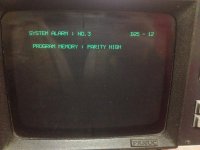Antarctica
Hot Rolled
- Joined
- Jan 16, 2007
- Location
- Annapolis, Maryland
Got an old Yam / Yang CK1 with a Fanuc 3T control. Machine has been down a while, but I've been working on getting it up and running again.
The machine will not power up enough to let the control turn on. I am 99% certain it is caused by Relay CR10 not being energized. I've swapped the relay, and done a lot of testing, but I'm confused by part of the ladder logic. Basically, the machine is stuck in emergency stop because CR10 won't close.
CR10 appears to be needed to power on the the main relay (CR1), but it also appears that the control needs to pull CR10's coil to ground to close it.
First Pic - CR10 being controlled by the control... The state of CR10 is also fed back into the control (I forgot to snap a pic of that but can). Also, why is there a big box drawn around CR10? I think its the only instance of a relay being treated like this in the whole ladder.

Second Pic - CR10 needs to be closed on B02 and B14 for the machine to start up, so that the control can be powered up...

Third Pic - The Emergency Stop ladder (the L19 LED is on)

Any ideas?
The machine will not power up enough to let the control turn on. I am 99% certain it is caused by Relay CR10 not being energized. I've swapped the relay, and done a lot of testing, but I'm confused by part of the ladder logic. Basically, the machine is stuck in emergency stop because CR10 won't close.
CR10 appears to be needed to power on the the main relay (CR1), but it also appears that the control needs to pull CR10's coil to ground to close it.
First Pic - CR10 being controlled by the control... The state of CR10 is also fed back into the control (I forgot to snap a pic of that but can). Also, why is there a big box drawn around CR10? I think its the only instance of a relay being treated like this in the whole ladder.

Second Pic - CR10 needs to be closed on B02 and B14 for the machine to start up, so that the control can be powered up...

Third Pic - The Emergency Stop ladder (the L19 LED is on)

Any ideas?



